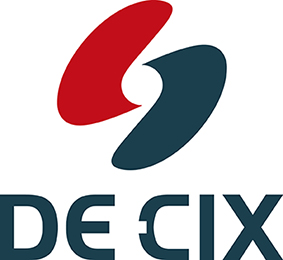The Economic Potential of Madrid as a Digital Hub
An analysis by Delfos Research, commissioned by Interxion and DE-CIX, reveals that an investment of 500 million Euros in digital infrastructure would create more than 1,800 jobs, inject 6 billion Euros into the local economy, and would allow Madrid to become a competitive digital hub in the face of the growing need for interconnection in Southern Europe. Theresa Bobis explains.

© ChrisGorgio | istockphoto.com
Madrid has the opportunity to become the reference hub of infrastructure and digital business (a digital hub) for southern Europe, which would accelerate the development of the digital economy in Spain. This is the main conclusion of the study, Madrid: a digital hub for southern Europe. Connected digital infrastructure, developed by Delfos Research for the data center company Interxion and DE-CIX, the leading global Internet Exchange operator.
The key to Madrid’s becoming a digital hub of reference for Southern Europe is that administrations are able to attract a critical mass of data centers and telecommunications networks (connected digital infrastructure). This infrastructure has traditionally been concentrated in a few locations, close to the main economic and population centers. This explains why the large European digital hubs are located in Frankfurt, London, Amsterdam, and Paris (known under the acronym FLAP).
However, as the demand for cloud services increases and more sophisticated and complex, demanding services are created, and as connectivity advances in developing countries and new businesses and industries (industry 4.0) emerge, data storage and network interconnection needs increase. This is generating a second wave of investments that require new digital hubs in Europe, especially in the south of the continent, due to geographical proximity and more affordable costs.
The possibilities of Madrid
Madrid is a hub for interconnection and distribution of data traffic within the Iberian Peninsula. It has the presence of important neutral exchange points that interconnect networks, and the proximity to large submarine cabling systems that connect it with Africa and America through Lisbon or Bilbao.
According to the report by Delfos Research, Madrid has the enviable position in southern Europe to become a de facto international communications hub. Its international bandwidth has experienced sustained growth in recent years, and its interconnections with other continents reflect its strategic geographical position. However, in relation to Africa, there is a potential for greater growth that Madrid should exploit. Madrid is witnessing an increasing concentration of data centers. This growth has taken place without deliberate planning, but if it wants to reach the status of a Digital Hub, it will be necessary to create a strategic plan.
Currently, the concentration of data centers in Madrid is not addressed in the city's infrastructure planning. For example, the planning of the electricity network does not take into account the future needs of the data centers to cover the growing energy demand of the expansion of the connected digital infrastructure.
Three investment scenarios: “Inertia”, “Stimulus”, and “Digital Hub”
The study by Delfos Research examines three investment scenarios and a direct, indirect, and induced return in the local economy. The first two, both of which are assessed as insufficient, have been called “Inertia” and “Stimulus” and provide for investments of 100 and 200 million Euros respectively. The last, “Digital Hub”, represents the ideal, with an investment of 500 million Euros. These are the measures that would be adopted and the return that each of them would have:
- Inertia. There is no active plan or policy to attract investment in this type of infrastructure. Decisions are left to the market, without external incentives. In this scenario, the accumulated investment for the next 5 years reaches 100 million Euros. The impact on the local economy is 944 million Euros, plus an investment in computer equipment of 1.2 billion Euros. This investment would create 319 full-time jobs.
- Stimulus. Policies are activated to encourage investment in data centers and networks. Public administrations simplify the processing of permits, even offering some incentive in the form of tax relief. In this scenario, the accumulated investment for the next 5 years comes to 200 million Euros. The impact on the local economy is 1.89 billion Euros, drawing an investment in computer equipment of 2.4 billion Euros. In this scenario, 631 full-time jobs would be created.
- Digital Hub. The administrations are committed to turning Madrid into a digital hub and capturing the enormous opportunity it represents. To this end, they lead a concerted effort through a strategic plan in which the main economic agents are involved. In this scenario, the accumulated investment for the next 5 years amounts to 500 million Euros. The impact on the local economy is 6.08 billion Euros, to which we must add an investment in computer equipment worth 6 billion Euros. A total of 1830 full-time jobs would be created in this scenario.
Factors for attracting digital infrastructure investment
Beyond the level of economic investment, the realization of this digital hub opportunity would require a joint and coordinated effort of different economic actors (electricity and telecommunications operators, among others) led by the public administration. Specifically, there are four aspects that must be taken care of in order to attract investments in digital infrastructure:
Energy
Access to fast and inexpensive energy, since data centers are large consumers of energy and present challenges such as the planning and operation of the electrical system (to be reliable, to involve renewable energy, and to be able to expand capacity and costs with agility).
Communications networks that are interconnected and secure
A location aspiring to become a digital hub must be able to provide quality service in response to local demand and, at the same time, be connected to other international nodes. Robust connectivity depends on different factors, which are analogous to those of the electricity supply: availability, agility of expansion, new network technologies, cost competitiveness, and security.
Public administrations
The role of public administrations is of great importance before, during, and after the construction of a data center. These represent high volume investments and any delays in processing or uncertainties due to regulatory changes have a strong impact. The period required to build a data center is between 1 and 3 years, while its useful life easily exceeds 20 years. This is why it is key to facilitate investment, guarantee transparency, create simple processes, offer a simple regulatory framework, speed up expansion, and promote the region as an investment destination, among other things.
Economic activity
In order to choose the location of their digital infrastructure, the investors need to carry out a preliminary diligence study in which all the factors affecting profitability are analyzed. Economic indicators or the speed of movement towards a digital economy are determining factors in the choice of a location, and all these elements must be taken care of: availability of resources for construction and operation, ease of access, expansion capacity, cost competitiveness, risks and security, and robust digital industries that increase the demand for infrastructures.
Theresa Bobis is Regional Director South Europe at DE-CIX, responsible for the DE-CIX Internet Exchanges in Marseille, Palermo, and Madrid.





